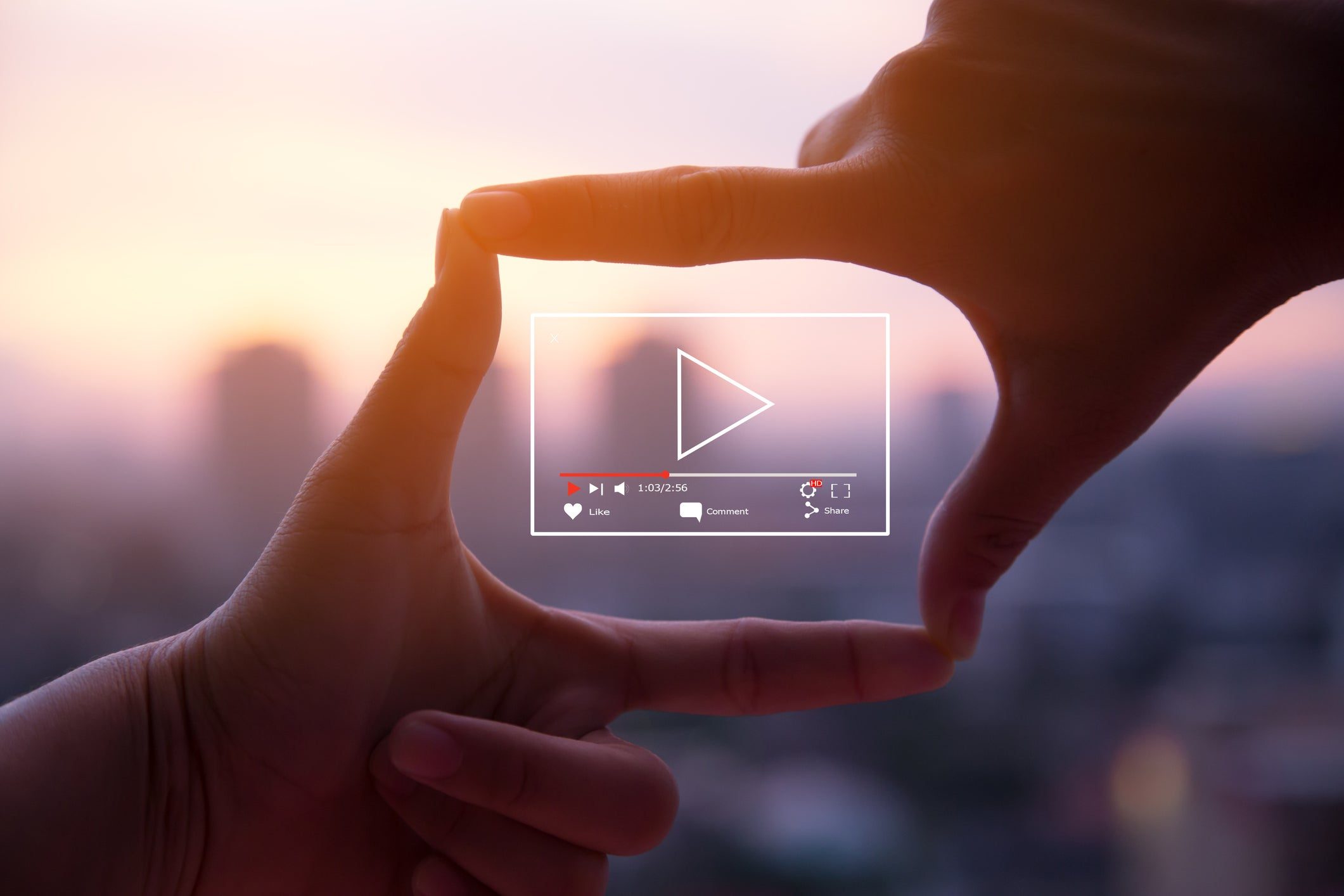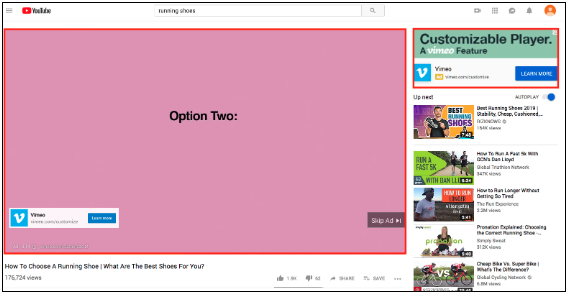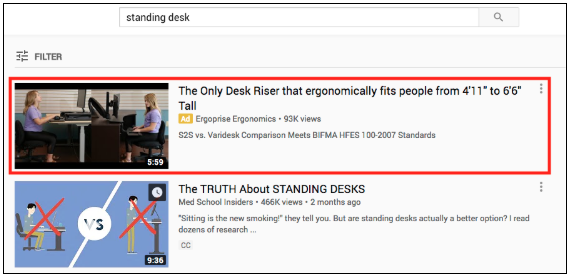YouTube is one of the world’s biggest platforms for people to advertise. Let’s take a look at YouTube Statistics that show how popular YouTube is. YouTube now is the second-biggest search engine that has 1.9 billion monthly active users. 50 million of them are content creators, they upload 576,000 hours of video to YouTube every day. Do you want to be one of over 90% of U.S. businesses? You just need to start creating a YouTube business account and marketing on YouTube. This complete guide will allow you to understand YouTube Ads.
By the time you’re finished reading, you’ll know the way to navigate YouTube’s ad manager and understand the platform’s six ad formats. You’ll also have a firm grasp of YouTube ad targeting, and have a better sense of how to get money from your channel.
Read more to know:
- YouTube video ad formats
- How to set up video ads on YouTube
- YouTube non-video ad formats
- YouTube ad specs
- Best practices for YouTube ad
YouTube video ad formats
People visit YouTube for video content, so video ads are the best method to reach your audience and build a brand on the platform.
There are three video ad categories on YouTube:
- TrueView ads
- Non-skippable video ads
- Bumper ads
1. TrueView Ads
TrueView ads are the skippable ads that are shown at the beginning of YouTube videos. They’re an excellent place to get started advertising on YouTube, for many reasons:
They’re versatile
TrueView ads help you to promote your products and services with how-to videos, demos, video testimonials, and more.
Let’s take a look at an example from UK-based outerwear manufacturer Superdry won a “YouTube Works for Brands” award for their “That is the Jacket” TrueView ads last year. The campaign was massively successful, resulting in a 37 percent rise in digital sales, and a 55 percent increase in hero product sales!
Effective TrueView ads have a clear call to action from the start of the video, whether that’s in the video itself, or via overlay ads and sponsored cards (more on those later).
They’re one of the best methods to drive quick customer engagement elsewhere on your YouTube channel, sometimes by up to 500%!
They’re a low risk
TrueView ads are an economical way to reach a relevant audience. You only pay when the ad has:
- Played for 30 seconds or longer (or ended)
- Get action from your viewer (like a click)
Because TrueView ads can be skipped after five seconds, you’ll not often waste ad on completely uninterested audiences.
They reach a wide audience
Keep in mind, YouTube takes Google search history into account when serving ads, so you’re essentially combining the audiences of the two largest search engines on the web.
TrueView ads can appear on other publisher websites within theDisplay Network, relying on which sort of TrueView advert you select: In-Stream or Discovery.
TrueView In-Stream ads
These ads play during YouTube videos, and they can even play in other places in Google’s display network, like apps or games.
Your in-stream ad might be up to three minutes long, however, 30 seconds is generally recommended. There’s no limitation in terms of how many words for your ad copy and clicks go to your website or digital storefront.
While your in-stream ad plays, a companion banner—an actual display ad—is shown in the top right. This is a direct path to your website.
TrueView Discovery ads
Discovery ads are like display ads—in fact, they even used to be called in-display ads. These are the recommended videos that randomly appear on the YouTube homepage, or as recommended/related videos on the search page.
With discovery ads, there’s no limit to the video length, since individuals select to navigate to them. The accompanying display ad headline has a limitation of 25 characters, and the body copy can contain two lines, each with a 35-word maximum.
General, TrueView campaigns are low risk, high reward. Even a skipped ad can increase engagement!
Up to 76 percent of customers reflexively skip ads given the option. However, people who skip TrueView ads are nonetheless 10 times more likely to visit or subscribe to a brand channel than those who were never exposed to the ad at all. And people who watch the ads? 23 times more likely!
TrueView for Reach
In April 2018, Google launched TrueView for Reach, a new way of optimizing TrueView ads based on campaign targets. Rather than paying every time a prospect watches your ad to completion, TrueView for Reach enables CPM (cost per 1,000) pricing for these shorter ads, meaning you’ll pay per 1,000 views. To be eligible for this type of optimization, your ad must be from six to 30 seconds.
TrueView for Reach is a good option if you want to reach a large audience quickly. On Google’s blog, Samsung commented that they improved reach by 50 percent at half their normal CPM using the new format during Beta testing.
However, Samsung is a giant company with a wide audience and range of products. In case you’re advertising a more niche product or service, TrueView for Reach might not be as helpful, simply because your ad might probably be better spent honing in on your specific audience.
2. Non-Skippable YouTube ads
Real talk: non-skippable ads might be annoying, however they’re here to stay.
There are two kinds of non-skippable YouTube ads:
- Pre-roll ads which appear before a video plays
- Mid-roll ads which are shown at the midpoint of 10 minute-or-longer videos
In case you’re looking to tell a deeper, more nuanced story that requires a bit build-up, you may want to arrange some non-skippable YouTube advertisements. Ensure that your video is hyper-focused and showcases your product’s value to your target audience.
Another tip? Make sure the video expresses your message audibly as well as visually. That method, even if someone’s not interested in watching, they still might hear what you have to say.
Skillful ad targeting is an important thing to finding success with non-skippable ads. Take the time to hone in on your desired audience.
Generally, non-skippable ads are effective for delivery to specific target markets. Another benefit? They’re paid for on a cost-per-mille (CPM) basis that gives you more control over your ad cost.
3. Bumper ads
Bumper ads are the more tolerable version of non-skippable ads, lasting for a maximum of 6 seconds. They are shown at the end of YouTube videos and are paid for on a CPM basis.
Because they’re short, bumper ads are perfect for targeting mobile users. They also allow you to effectively recycle longer content.
Pro tip: Cut down on the “annoying” factor of non-skippable ads by creating a six-second bumper version. Then, let viewers who have seen the non-skippable version turn to watch the shorter version. This way, you can reinforce exposure to the brand without leaving viewers frustrated.
In case you need inspiration, YouTube has a leaderboard featuring the top 20 bumper ads of the moment based on views, click-through rate, and user creative ratings.



